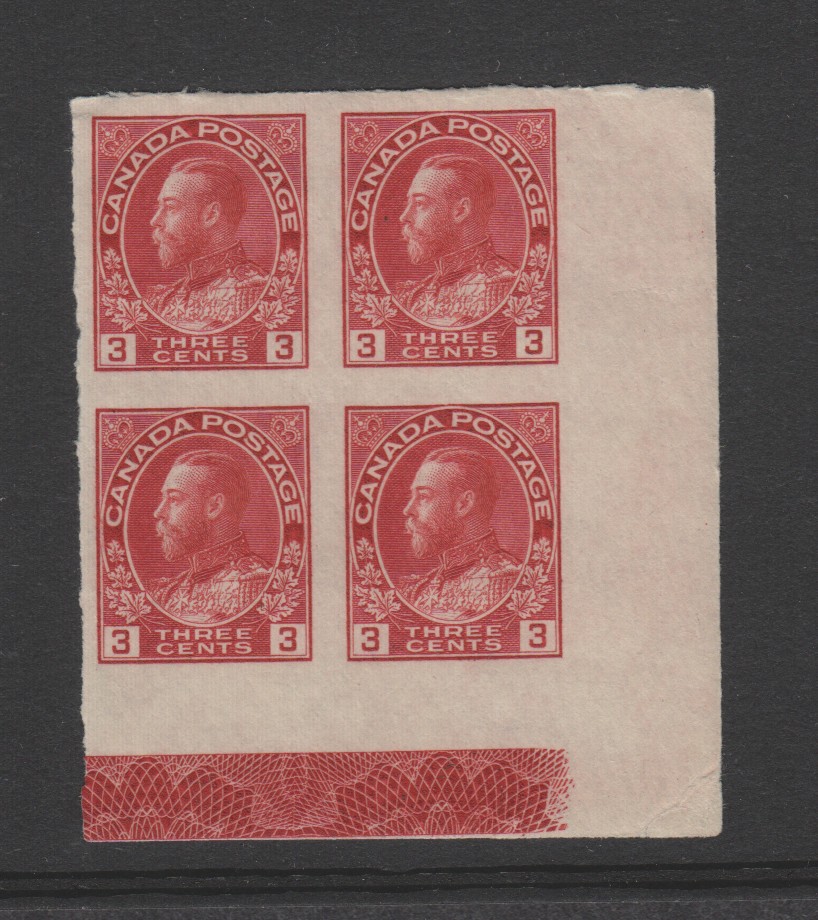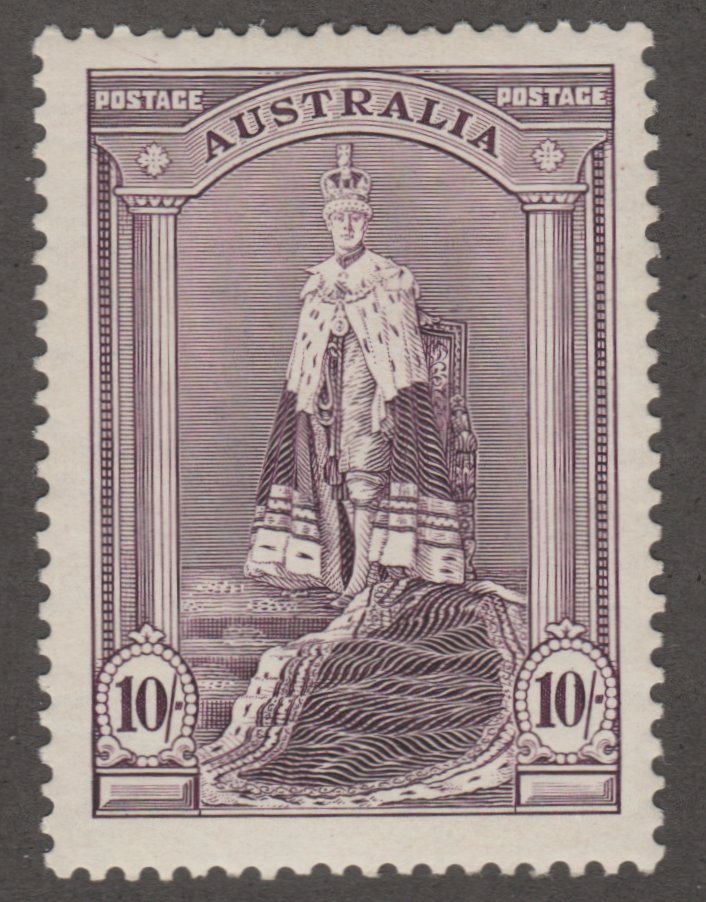
Discussion - Member to Member Sales - Research Center

Discussion - Member to Member Sales - Research Center

Excerpt from the B.S.A.P. (British Society of Australian Philately) Bulletin February 2018. Vol. 73 No.1. (Stamps from my collection)
By May 30th 1946 the number of Commonwealth troops increased to 38,000 under the command of Lieutenant-General Horace Robertson and the Australians had not been in Japan long before they found, like occupying troops of other nations earlier in history, that it was profitable to deal in scarce commodities and luxury items. Many attempts were made to stamp out the consequential rackets among the troops.
One of the most successful was, for a time, the rigid control of the transmission of money from Japan to Australia, but this failed when troops adopted the simple expedient of purchasing at military post offices, large quantities of Australian postage stamps and transmitting them to Australia, where they were cashed at post offices, subject to a 5% re-purchase discount.
Despite all efforts on the part of the Australian Military Command to curb the black market and the continual breaking of the exchange regulations, the practices not only survived but continued to grow.
During the latter part of 1946, Lieutenant-General Robertson, realising that stronger action was necessary, and after consultation, decided that those Australian postage stamps, normally sold at the military post offices, would henceforth bear an overprint.
B.C.O.F
JAPAN
1946
Such overprinted stamps would be valid for all purposes as needed by the occupation garrisons. It was the intention of the military leaders that if the stamps so over-printed were sent in enclosures in mint condition to Australia and should be presented at post offices within the Commonwealth for resale, they would be considered demonetised.
The objects of the surcharges as officially stated by the Department of the Army were:
To mark the presence in Japan of the Australian Military Forces component of the occupation forces, and, to serve as a check upon evasion of currency control restrictions.
While the Australian stamps for overprinting were supplied under a special arrangement by the Postmaster-General’s Department of the Army in Japan, the B.C.O.F. overprints were not issued under the authority of the Australian Post Office, but were produced and authorised by the Australian Army.
The overprinting was undertaken by the Hiroshima Printing Co., Kure Japan, with five proof sheets (i.e. complete settings of 160 in two panes of 80) being prepared as follows.
One full sheet in Black in thin seriffed type for the overprinting of 1d and 3d stamps, this option was subsequently rejected.
One full sheet in Red in thin seriffed type for the overprinting of 3d stamps. This option was subsequently rejected.
One full sheet in Red and Gold in thin seriffed type for the overprinting of ½d and 1d stamps. This option was subsequently rejected.
One full sheet in Black in thin seriffed type for the overprinting of ½d stamps. This option was subsequently adopted.
One full sheet in Black in bold sans-serif type for the overprinting of 1d and 3d stamps. This option was subsequently adopted.
Example below of the thin proof overprint adopted.

Example below of the thick proof overprint adopted.

Example below of the proof overprints rejected.


Example below of the 1946 thin serif trial proof adopted.

Rejected trial proofs produced in 1946 (currently not in possession of the KGVI 3d with red overprint).



The first immediately withdrawn issue was the ½d and the 3d (both thick sans-serif) denominations were issued at Australian Army and Air Force Post offices within the B.C.O.F. area on the 12th October 1946, but were promptly withdrawn a few days later without any immediate explanation.
Subsequently the reason for the early withdrawal came to light in a letter dated 17th August 1950 from Mr. F.R. Sinclair, the Secretary of the Department of the Army:
"The reason why it was necessary for the sale which had taken place on the 12th and 13th October, 1946, to be suspended was due to the fact that final approval for sale of stamps B.C.O.F., JAPAN, 1946, had not be given."
However, as noted in the Australian Post of 12th December 1946:
"....... but what the (military authorities in japan) have overlooked is that Australian stamps so overprinted constitute the first issue of stamps resulting from the occupation of Japan, and that as such they will be in tremendous demand amongst philatelists and collectors the world over. In consequence these stamps are already eagerly sought at prices not five percent below face value, but ten percent or more above."

5 Members
like this post.
Login to Like.
Excellent overview of the B.C.O.F. stamps. Thanks for posting. Such an effort to prevent soldiers from sending some money home -- was it justified? Love those red overprints. Pictured is my basic black set. Some of my favorite stamps, from a historical point of view.
Cheers!


1 Member
likes this post.
Login to Like.
"Excellent overview of the B.C.O.F. stamps. Thanks for posting. Such an effort to prevent soldiers from sending some money home -- was it justified? Love those red overprints. Pictured is my basic black set. Some of my favorite stamps, from a historical point of view."
Thanks Winedrinker. They succeeded in one way, and that was to prevent the stamps being sent back to Australia to be cashed in, and failed in another way, making those humble stamps very much sought after.
The next story I will be posting very soon will be the second issue of the B.C.O.F. stamps, those officially introduced in 1947, the stamps you are showing, you may find it interesting.
Rob

1 Member
likes this post.
Login to Like.

B.C.O.F. (British Commonwealth Occupation Forces)
Excerpt from the B.S.A.P. (British Society of Australian Philately) Bulletin February 2018. Vol. 73 No.1. (Stamps from my collection)
By May 30th 1946 the number of Commonwealth troops increased to 38,000 under the command of Lieutenant-General Horace Robertson and the Australians had not been in Japan long before they found, like occupying troops of other nations earlier in history, that it was profitable to deal in scarce commodities and luxury items. Many attempts were made to stamp out the consequential rackets among the troops.
One of the most successful was, for a time, the rigid control of the transmission of money from Japan to Australia, but this failed when troops adopted the simple expedient of purchasing at military post offices, large quantities of Australian postage stamps and transmitting them to Australia, where they were cashed at post offices, subject to a 5% re-purchase discount.
Despite all efforts on the part of the Australian Military Command to curb the black market and the continual breaking of the exchange regulations, the practices not only survived but continued to grow.
During the latter part of 1946, Lieutenant-General Robertson, realising that stronger action was necessary, and after consultation, decided that those Australian postage stamps, normally sold at the military post offices, would henceforth bear an overprint.
B.C.O.F
JAPAN
1946
Such overprinted stamps would be valid for all purposes as needed by the occupation garrisons. It was the intention of the military leaders that if the stamps so over-printed were sent in enclosures in mint condition to Australia and should be presented at post offices within the Commonwealth for resale, they would be considered demonetised.
The objects of the surcharges as officially stated by the Department of the Army were:
To mark the presence in Japan of the Australian Military Forces component of the occupation forces, and, to serve as a check upon evasion of currency control restrictions.
While the Australian stamps for overprinting were supplied under a special arrangement by the Postmaster-General’s Department of the Army in Japan, the B.C.O.F. overprints were not issued under the authority of the Australian Post Office, but were produced and authorised by the Australian Army.
The overprinting was undertaken by the Hiroshima Printing Co., Kure Japan, with five proof sheets (i.e. complete settings of 160 in two panes of 80) being prepared as follows.
One full sheet in Black in thin seriffed type for the overprinting of 1d and 3d stamps, this option was subsequently rejected.
One full sheet in Red in thin seriffed type for the overprinting of 3d stamps. This option was subsequently rejected.
One full sheet in Red and Gold in thin seriffed type for the overprinting of ½d and 1d stamps. This option was subsequently rejected.
One full sheet in Black in thin seriffed type for the overprinting of ½d stamps. This option was subsequently adopted.
One full sheet in Black in bold sans-serif type for the overprinting of 1d and 3d stamps. This option was subsequently adopted.
Example below of the thin proof overprint adopted.

Example below of the thick proof overprint adopted.

Example below of the proof overprints rejected.


Example below of the 1946 thin serif trial proof adopted.

Rejected trial proofs produced in 1946 (currently not in possession of the KGVI 3d with red overprint).



The first immediately withdrawn issue was the ½d and the 3d (both thick sans-serif) denominations were issued at Australian Army and Air Force Post offices within the B.C.O.F. area on the 12th October 1946, but were promptly withdrawn a few days later without any immediate explanation.
Subsequently the reason for the early withdrawal came to light in a letter dated 17th August 1950 from Mr. F.R. Sinclair, the Secretary of the Department of the Army:
"The reason why it was necessary for the sale which had taken place on the 12th and 13th October, 1946, to be suspended was due to the fact that final approval for sale of stamps B.C.O.F., JAPAN, 1946, had not be given."
However, as noted in the Australian Post of 12th December 1946:
"....... but what the (military authorities in japan) have overlooked is that Australian stamps so overprinted constitute the first issue of stamps resulting from the occupation of Japan, and that as such they will be in tremendous demand amongst philatelists and collectors the world over. In consequence these stamps are already eagerly sought at prices not five percent below face value, but ten percent or more above."

5 Members
like this post.
Login to Like.

re: Short History of the B.C.O.F. and the introduction of the first Occupation stamps
Excellent overview of the B.C.O.F. stamps. Thanks for posting. Such an effort to prevent soldiers from sending some money home -- was it justified? Love those red overprints. Pictured is my basic black set. Some of my favorite stamps, from a historical point of view.
Cheers!


1 Member
likes this post.
Login to Like.

re: Short History of the B.C.O.F. and the introduction of the first Occupation stamps
"Excellent overview of the B.C.O.F. stamps. Thanks for posting. Such an effort to prevent soldiers from sending some money home -- was it justified? Love those red overprints. Pictured is my basic black set. Some of my favorite stamps, from a historical point of view."
Thanks Winedrinker. They succeeded in one way, and that was to prevent the stamps being sent back to Australia to be cashed in, and failed in another way, making those humble stamps very much sought after.
The next story I will be posting very soon will be the second issue of the B.C.O.F. stamps, those officially introduced in 1947, the stamps you are showing, you may find it interesting.
Rob

1 Member
likes this post.
Login to Like.

